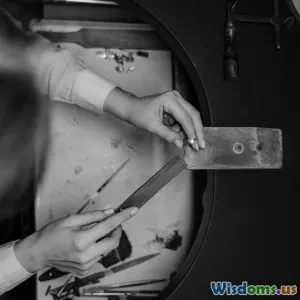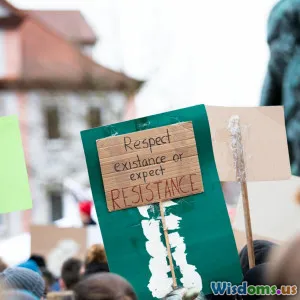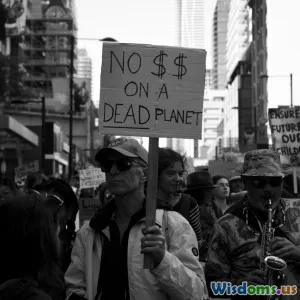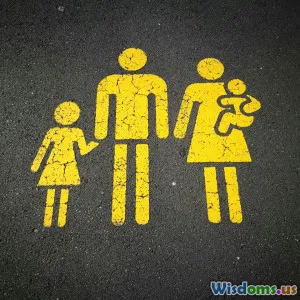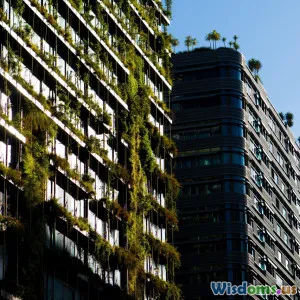
The Role of Public Art in Urban Spaces
7 min read Explore the transformative power of public art in urban environments and its impact on community identity, engagement, and cultural dialogue. (0 Reviews)
The Role of Public Art in Urban Spaces
Public art is an essential component of urban environments, enriching the cultural landscape of cities while providing unique opportunities for community engagement and dialogue. From murals and sculptures to installations and performances, public art transforms ordinary spaces into vibrant canvases that reflect the identity and history of a community. This article explores the multifaceted role of public art in urban settings, its impact on community identity, social cohesion, and public engagement, and the challenges it faces in contemporary society.
Defining Public Art
Public art refers to artworks created for public spaces, accessible to everyone without barriers. It encompasses various forms, including:
- Murals: Large paintings on walls that can tell stories or convey cultural messages.
- Sculptures: Three-dimensional works that can serve as focal points in parks or plazas.
- Installations: Interactive or immersive pieces that invite participation.
- Performances: Live art events that engage audiences in real-time.
The essence of public art lies not only in its aesthetic appeal but also in its ability to provoke thought, inspire dialogue, and reflect the complexities of contemporary society.
Enhancing Community Identity
Public art serves as a powerful tool for fostering community identity. It can encapsulate the history, culture, and values of a community, creating a sense of belonging among residents. For instance, the Chicago Cultural Mile features various public art projects that celebrate the city’s rich heritage and diversity. Similarly, the Mural Arts Program in Philadelphia has successfully involved local artists to create murals that depict the stories and struggles of the community, enhancing pride and ownership.
Case Study: The Berlin Wall
A poignant example of public art's role in community identity is the East Side Gallery in Berlin, where artists transformed a section of the Berlin Wall into a gallery of murals post-reunification. This project not only commemorates the historical significance of the wall but also represents the collective memory and resilience of the people, turning a former symbol of division into one of unity and creativity.
Fostering Social Cohesion and Engagement
Public art promotes social cohesion by providing common ground for diverse groups of people. It encourages dialogue and interaction among residents, fostering a sense of community. Events such as art walks, festivals, or workshops can bring together people from different backgrounds, facilitating connections and shared experiences.
Example: The High Line in New York City
The High Line, an elevated park built on a former railway track in New York City, is a prime example of how public art can enhance community engagement. The park features numerous art installations and performances, making it a thriving cultural hub. It not only revitalizes the area but also serves as a gathering space where people can experience art in a communal setting, thus strengthening social ties.
Encouraging Cultural Dialogue
Public art invites conversations about various societal issues, from social justice to environmental concerns. By addressing contemporary themes, artists can engage the public in meaningful dialogues. For instance, the Statue of Liberty serves not only as a symbol of freedom but also as a platform for discussions on immigration and diversity.
Public Art and Activism
In recent years, public art has increasingly intersected with activism, providing a voice for marginalized communities. Projects like The Fearless Girl statue facing the Charging Bull on Wall Street have sparked conversations about gender equality and representation in leadership roles, demonstrating how public art can challenge societal norms and inspire change.
Challenges in Public Art
Despite its numerous benefits, public art faces several challenges. Issues such as funding, vandalism, and differing community opinions can hinder public art initiatives. Additionally, the commercialization of public spaces poses a risk to the integrity and purpose of art created for the public good.
The Importance of Community Involvement
To overcome these challenges, it is crucial for artists, city planners, and community members to collaborate effectively. Engaging the public in the planning and creation process ensures that the artwork resonates with the community and addresses their needs and aspirations.
Conclusion
Public art plays a vital role in shaping urban spaces and enriching the cultural fabric of communities. By enhancing community identity, fostering social cohesion, and encouraging cultural dialogue, public art transforms cities into vibrant and inclusive environments. As urban areas continue to evolve, prioritizing public art initiatives can lead to more connected, engaged, and inspired communities, ultimately contributing to a stronger cultural society. Embracing public art is not just about beautifying spaces; it is about nurturing a sense of belonging and shared experiences that define our urban landscapes.
Rate the Post
User Reviews
Popular Posts













